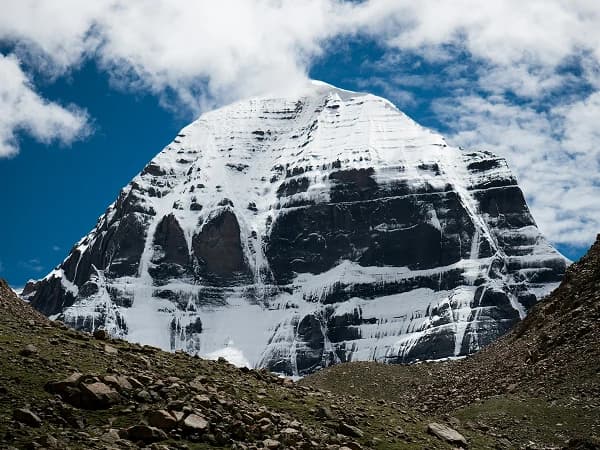Trekking in Nepal is a once-in-a-lifetime experience and is one of the most fulfilling journeys that offers breathtaking Himalayan scenery, a rich tapestry of culture, landscapes, and spirituality. From world-famous trails ranging from beginner-friendly to world-class challenges, such as Everest Base Camp and the Annapurna Circuit, to off-the-beaten-path adventures like the Manaslu Circuit Trek and Upper Dolpo Trek, the country offers something for every kind of trekker. However, amid the excitement, it is essential to remember that trekking in Nepal requires more than just physical fitness; it also demands cultural sensitivity, environmental awareness, and careful planning.
Whether you’re a seasoned hiker or a first-time trekker, knowing the dos and don'ts of trekking in Nepal can greatly improve your trekking experience and help ensure your journey is safe, respectful, and responsible. From understanding local customs and protecting fragile ecosystems to staying healthy at high altitudes, they’re crucial for every trekker.
Do’s while trekking in Nepal
Respect Local Culture and Traditions:
Nepal is a multi-ethnic and multi-religious country where ancient customs and spiritual practices are deeply valued. While trekking, you will have to often pass through remote villages where ancient customs and traditions are still an integral part of daily life. As a visitor, your actions reflect not only on you but also on the broader trekking community.
- Greet Respectfully: Saying "Namaste" with palms pressed together is a customary greeting and shows respect. Bow your heads slightly Bow your head slightly when greeting elders, and always use both hands when giving or receiving items.
- Sacred Space etiquette: Religious sites are common along trekking trails. You will pass through monasteries, temples, and stupas that are considered sacred in Nepal. Dress modestly and always walk clockwise around as a sign of reverence. Remove shoes before entering temples or homes. Also, avoid pointing with fingers; use your whole hand instead.
- Photography: Always ask for permission before taking photos of locals, especially monks or inside temples. Some communities view unsolicited photography as intrusive.
Acclimatize properly to avoid Altitude Sickness:
Many treks in Nepal exceed 3,000 meters, and rapid elevation gain can lead to Acute Mountain Sickness (AMS), which can escalate into life-threatening conditions if ignored. Altitude sickness can occur when you gain elevation too quickly. Common symptoms include headache, nausea, fatigue, and dizziness.
- Take it slow: Do not rush while trekking. Rushing requires your body to intake more oxygen, where oxygen is very low at higher altitudes, which might lead to altitude sickness. So, it is better to avoid climbing more than 300–500 meters in sleeping elevation per day once you cross 3,000 meters.
- Listen to your body: If you experience headaches, nausea, or dizziness during the trek. Consult with your trek leader and stop ascending and rest! Ignoring symptoms can lead to extreme altitude sickness conditions like HAPE (High Altitude Pulmonary Edema) or HACE (High Altitude Cerebral Edema).
- Plan for acclimatization days: Treks like Everest Base Camp, Manaslu Circuit, or Annapurna Circuit, etc., built in extra days at certain altitudes, allow your body to adjust and are very critical for your health.
- Climb high, sleep low: This common maxim used in trekking or any kind of high-altitude activities emphasizes the importance of acclimatization to avoid altitude sickness. So, hike to higher altitudes during the day and sleep at lower elevations to help your body adjust.
- Medication (if necessary) and Hydration: Consult your doctor about taking Diamox to help acclimate. Communicate constantly with the trek guide. Drink plenty of water and avoid alcohol and tobacco, both of which worsen altitude symptoms.
Support the Local Economy
Tourism is one of the most crucial sectors for Nepal's economy and development, contributing significantly to foreign exchange earnings, job creation, and cultural preservation. Trekking has also been playing a vital role in supporting the livelihoods of people in the Himalayan Regions.
- Hire local guides and porters: Employing local guides and porters who are licensed helps to generate employment opportunities for the residents. This not only helps to generate employment but also enhances your experience through deeper cultural exchange, authentic stories, and guidance, ultimately contributing to the local economy.
- Stay in locally-owned teahouses and eat local food: Choose locally owned teahouses and restaurants. These family-run accommodations provide an intimate glimpse into village life and help sustain rural economies.
- Purchase handicrafts directly from artisans: Buy souvenirs and crafts directly from artisans and small shops instead of imported or mass-produced items.
Pack responsibly and travel lightly
Carrying excess gear is tiring and can burden and exhaust porters or animals that help transport your load. Overpacking can be burdensome for you as well, along with the porters also increasing the environmental footprint.
- Smart packing: Stick to essentials like a down jacket, a good pair of hiking boots, thermal layers, a reusable water bottle, a headlamp, basic toiletries, and medicine.
- Eco-friendly gear: Carry biodegradable soap, reusable utensils, cloth shopping bags, and avoid individually packaged goods. Refill water at teahouses or use purification tablets/filters instead of buying bottled water.
- Porter weight limits: The legal load limit for a porter in Nepal is 20–25 kg. Respect this to ensure ethical treatment of support staff.
Practice Leave No Trace Principles
With rising numbers of trekkers, Nepal's fragile ecosystems are at risk of degradation. So, preserving Nepal’s pristine environment is crucial for both its beauty and sustainability.
- Take all waste with you: That includes food wrappers, batteries, tissue paper, and hygiene products. Even biodegradable waste can harm ecosystems at high altitudes. If you carry it in, carry it out.
- Sanitation: Use designated toilets in teahouses. In remote areas, dig a small hole at least 6-8 inches deep and 50 meters from water sources. Use biodegradable tissue or carry a ziplock bag for used toilet paper.
- Stick to the trail: Don’t shortcut switchbacks or trample vegetation. Venturing off-path can damage delicate alpine flora and contribute to trail erosion.
- Camp responsibly: If you're camping, choose established sites, avoid building fires, and always clean up thoroughly before moving on.
Don’ts while trekking in Nepal
Don’t Disrespect Local Norms
Nepalese society is conservative and rooted in tradition. Ignoring local customs can lead to offense and misunderstandings. So, one cultural misstep can offend communities and damage the image of trekkers. Hence, you have to be very careful in that part while trekking in Nepal.
Avoid public displays of affection: As Nepal is a quite conservative society, just a simple gesture like hugging or kissing in public may be considered inappropriate in rural or religious areas.
- Don’t wear revealing or flashy clothing: It would be better if you could avoid wearing revealing or flashy clothing, especially in traditional villages or near religious sites. Dress modestly by covering your shoulders and knees. It does not matter much in the city areas, but it would be better to avoid it in the village areas.
- Feet awareness: Never point your feet at someone or sacred objects. Feet are considered the lowest and most impure part of the body in Nepali culture.
- Avoid stepping over people or offerings: Offerings of food, flowers, and other items are common in temples and religious sites. Doing so is considered extremely disrespectful.
Don’t Underestimate the Trekking Terrain
Nepal’s trails, though beautiful, can be remote and physically demanding with steep climbs, rocky paths, and changing, unpredictable weather.
Physical preparation: Even short treks like Ghorepani Poon Hill or Mardi Himal can have steep ascents and rough trails.
- Avoid solo trekking in remote regions: It’s safer to travel with a guide or in a group in case of emergencies.
- Prepare properly: Carry a route map, extra food, a headlamp, emergency contacts, and understand your route beforehand.
- Stay flexible: Weather can change suddenly, especially in the mountains. Be prepared for delays and route changes.
Don’t Bargain Excessively
While some negotiation is expected in the markets, pushing too hard for discounts can be disrespectful and insensitive, especially in rural areas.
Understand local value: A few hundred rupees might not mean much to a tourist, but could be significant to a local vendor.
- Be respectful: If the price doesn’t work for you, walk away politely instead of haggling aggressively.
- Support fair wages: Pay guides and porters fairly for their services. Tipping is customary and appreciated.
Don’t Use Drones Without Permission
Nepal has strict rules regarding drone usage for safety, privacy, and security. Flying drones in Nepal is strictly regulated, particularly in national parks and near heritage or military sites.
- Get official permits: Unauthorized drone usage is illegal, especially in national parks, heritage sites, and near military zones. You might also have to pay fines or confiscation due to unauthorized usage.
- Respect local sensitivity: Some communities may find drones intrusive or inappropriate, especially near religious festivals or in sacred areas. So, never fly drones near people or villages without consent.
Don’t Feed or Harm Wildlife
Nepal is home to diverse wildlife including the rare red pandas, Himalayan tahr, snow leopards, and other variety of exotic birds. They are a part of Nepal’s rich biodiversity and must be protected.
- Don’t disturb animals: Disturbing the animals and feeding them disrupts their natural behavior and may lead to dependency. This can also alter their natural behavior and can lead to health problems.
- Avoid loud noises or approaching them: Loud noises can disturb not only wildlife but also the serenity of fellow trekkers and local communities. Also, approaching them is dangerous for you and the animal both.
Conclusion
Trekking in Nepal is not just about physical endurance; it’s a spiritual and cultural experience. By following these simple yet crucial dos and don’ts, you not only keep yourself safe but also show respect for the land, its people, and the environment. In return, Nepal will reward you with unforgettable memories, genuine human connections, and the peace that only the Himalayas can offer.
Whether you’re heading for the Everest Base Camp, Poon Hill, or exploring hidden gems like Pikey Peak or Tsum Valley, let your journey be one of respect, responsibility, and reverence.


.webp&w=1200&q=75&dpl=dpl_FGFLgfXnBs6LChWnpe3GCAYcjGzu)



